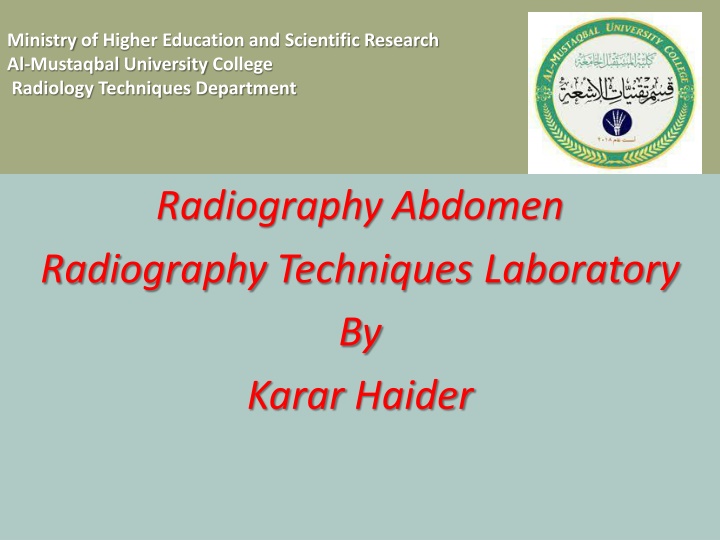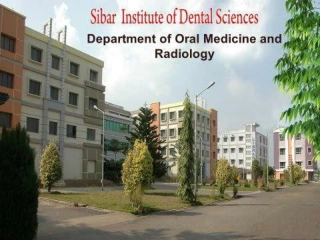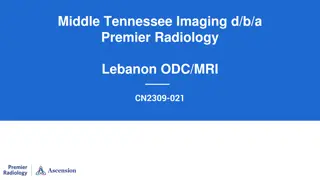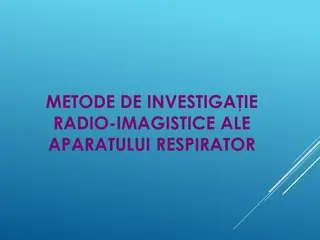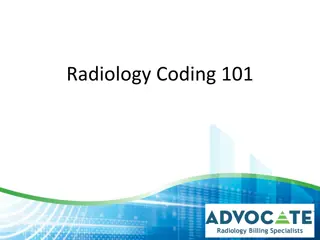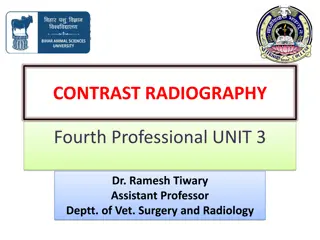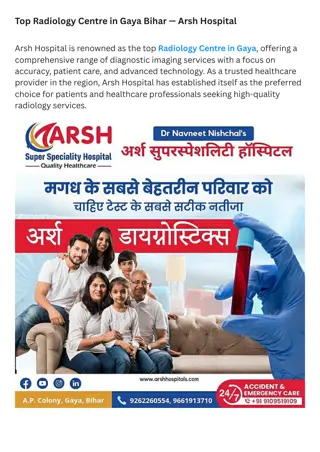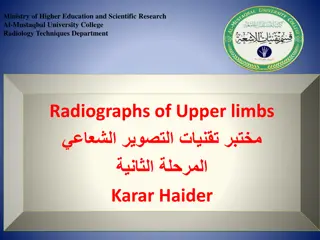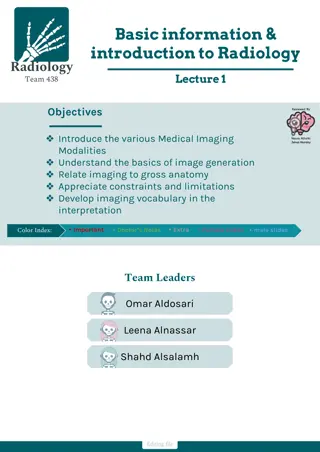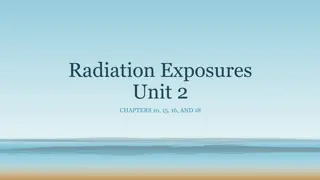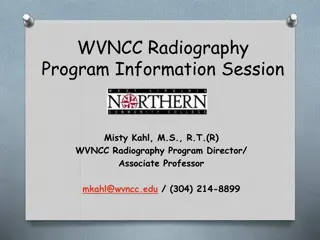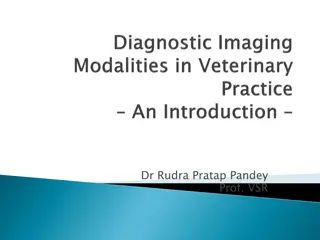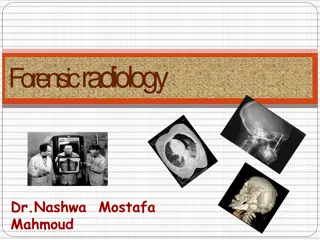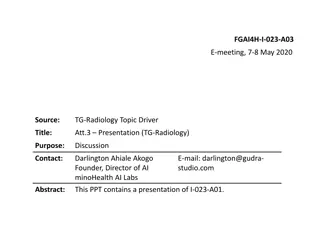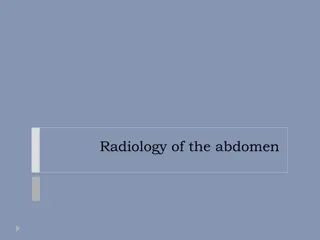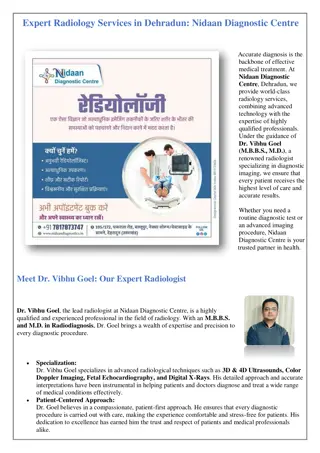Radiography Techniques for Abdomen Imaging in Radiology Department
In the Radiology Techniques Department at Al-Mustaqbal University College, various radiography techniques are employed for imaging the abdomen. The techniques include AP supine (KUB), AP erect, and left lateral decubitus positions. Detailed instructions for patient positioning, central ray alignment, collimation, and other technical aspects are provided for each technique. These techniques help in obtaining clear and accurate abdominal images for diagnostic purposes in radiography.
Download Presentation

Please find below an Image/Link to download the presentation.
The content on the website is provided AS IS for your information and personal use only. It may not be sold, licensed, or shared on other websites without obtaining consent from the author.If you encounter any issues during the download, it is possible that the publisher has removed the file from their server.
You are allowed to download the files provided on this website for personal or commercial use, subject to the condition that they are used lawfully. All files are the property of their respective owners.
The content on the website is provided AS IS for your information and personal use only. It may not be sold, licensed, or shared on other websites without obtaining consent from the author.
E N D
Presentation Transcript
Ministry of Higher Education and Scientific Research Al-Mustaqbal University College Radiology Techniques Department Radiography Abdomen Radiography Techniques Laboratory By Karar Haider
Radiography Abdomen 1- AP supine (KUB) 2- AP erect 3- Left lateral decubitus
AP Supine (KUB): Abdomen Position Supine, legs extended, arms at sides * Ensure no rotation * Center of IR to level of iliac crests, ensuring that upper margin of symphysis pubis is included on lower IR margin (A large hypersthenic patient may require that the IR be placed landscape with a second IR centered higher)
Central Ray: CR to center of IR (level of iliac crests) SID: 40 (102 cm) Collimation: Collimate to upper and lower abdomen so tissue borders Respiration: Expose at end of expiration IR size 35 43 cm (14 17 ) lengthwise Grid
AP Erect : Abdomen Position Erect, back against table, arms at sides Ensure no rotation Center of IR 2 (5 cm) above iliac crest to include diaphragm (For sthenic patient, top of IR is at level of axilla) Central Ray: CR horizontal, to center of IR (2 [5 cm] above iliac crest) SID: 40 (102 cm) Collimation: to so tissue margins of abdomen and diaphragm
35 43 cm (14 17) lengthwise Grid Erect marker Patient should be on side a minimum of 5 minutes before
Lateral Decubitus (AP): Abdomen Position Lock wheels of stretcher Adjust patient and stretcher so that center of IR and table (and CR) is approximately 2 (5 cm) above level of iliac crest (to include diaphragm) Adjust height of IR to ensure that upside of abdomen is included for possible free air Central Ray: CR horizontal, to center of IR SID: 40 (102 cm) Collimation: to so tissue margins of abdomen and diaphragm
35 43 cm (14 17) Grid Decubitus marker Patient should be on side a minimum of 5 minutes before exposure; a period of 10 20 minutes is preferred
Dorsal Decubitus (Lateral): Abdomen Position Patient supine (on decubitus board or support to elevate posterior abdomen), side against table, arms above head Secure stretcher (lock wheels) Center of IR and table (and CR) at level of iliac crest (2 [5 cm] above iliac crest to include diaphragm) Central Ray: CR horizontal, to center of IR SID: 40 (102 cm) Collimation: Collimate to upper and lower abdomen so tissue borders
35 43 cm (14 17) landscape Grid Include decubitus marker
